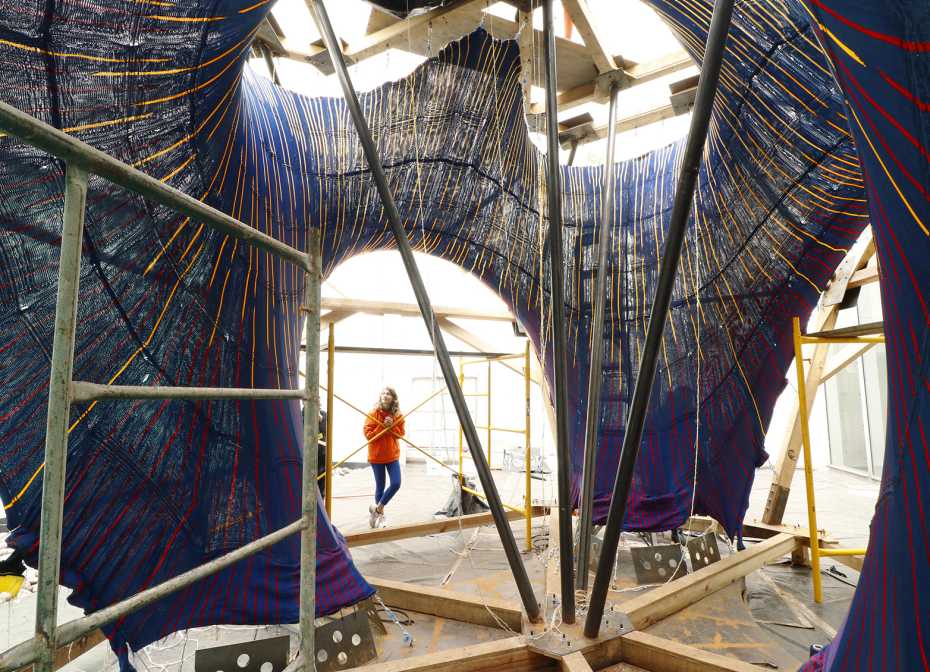Researchers from ETH Zurich have collaborated with Zaha Hadid Architects to create a curved shell concrete pavilion using a 3D knitted formwork.
The four meters tall, five-tonne concrete structure, called KnitCandela, integrates over two miles of 3D printed yarn into four strips of between 15 and 26 meters supported by a steel cable-net, demonstrating cost and time effective construction.
“Knitting offers a key advantage that we no longer need to create 3D shapes by assembling various parts. With the right knitting pattern, we can produce a flexible formwork for any and all kinds of shell structures, pockets and channels just by pressing a button,” explained Mariana Popescu, PhD researcher at the Block Research Group, part of the National Centre of Competence in Research (NCCR) Digital Fabrication, ETH Zurich.
KnitCandela is currently on display at the Museo Universitario Arte Contemporáneo (MUAC) in Mexico City.
The KnitCrete formwork
Paying homage to the influential Spanish-Mexican architect, Félix Candela, Popescu and Lex Reiter, Chair of Physical Chemistry of Building Materials, ETH Zurich, developed a new 3D knitted textile technology, KnitCrete, to generate curving concrete structures, without the need for molds.
Using a conventional knitting machine, the KnitCrete method implements technical textile shuttering coated with a special cement paste to create rigid molds. Layers of the structure also contain 1000 modeling, creating the desired shell shape. KnitCandela was assembled in the MUAC inner courtyard. This involved the knitted formwork being tensioned between a temporary boundary frame and sprayed with the formulated mixture.
The KnitCrete formwork produced the material in 36 hours and weighs 25 kilograms. “It took only five weeks from the initial work until completion – much less time than if we were using conventional technology,” said Matthias Rippmann, project manager for KnitCandela and senior researcher in the Block Research Group.

ETH Zurich has previously explored other methods for construction using additive manufacturing. Earlier this year, researchers on the MAS Digital Fabrication team at ETH Zurich created an experimental metal facade using 3D printed sand molds.
Following this, the MAS Digital Fabrication team created fabricated an 80m² lightweight concrete slab using the same process. Dubbed as the “Smart Slab”, this 80m2 lightweight concrete block is said to be the world’s first full-scale architectural project to use 3D sand printing for its formwork.
Stay updated with the latest additive manufacturing news by subscribing to the 3D Printing Industry newsletter. Also, find us on Facebook and like us on Twitter.
Looking for jobs in engineering? Search open opportunities and apply with 3D Printing Jobs. You can also make a profile to advertise your latest vacancies.
Featured image shows KnitCandela. Photo via ETH Zurich.


